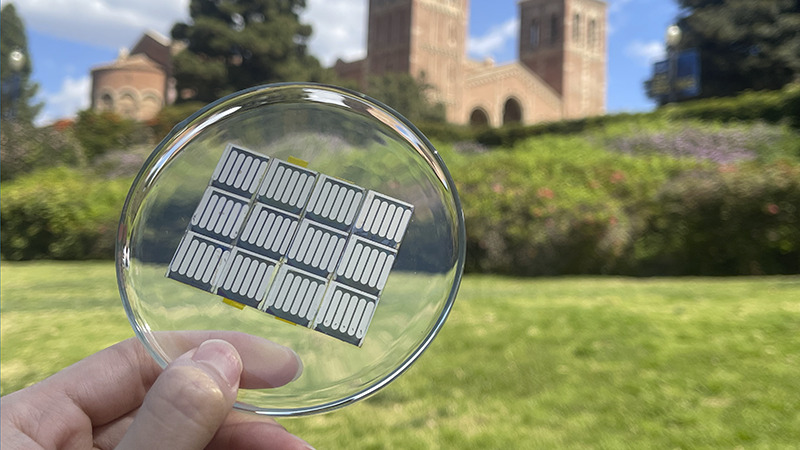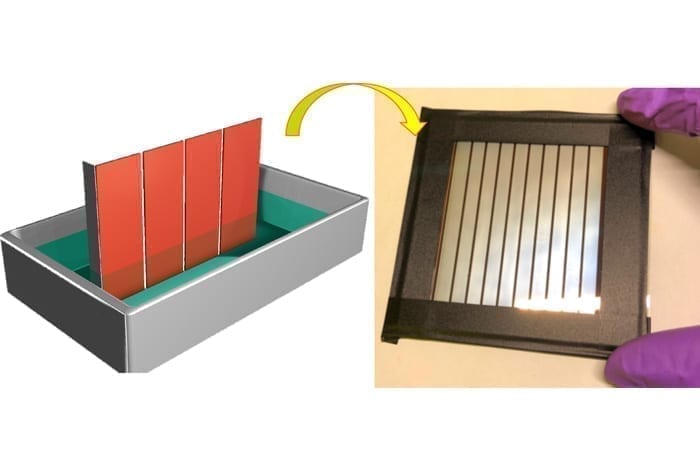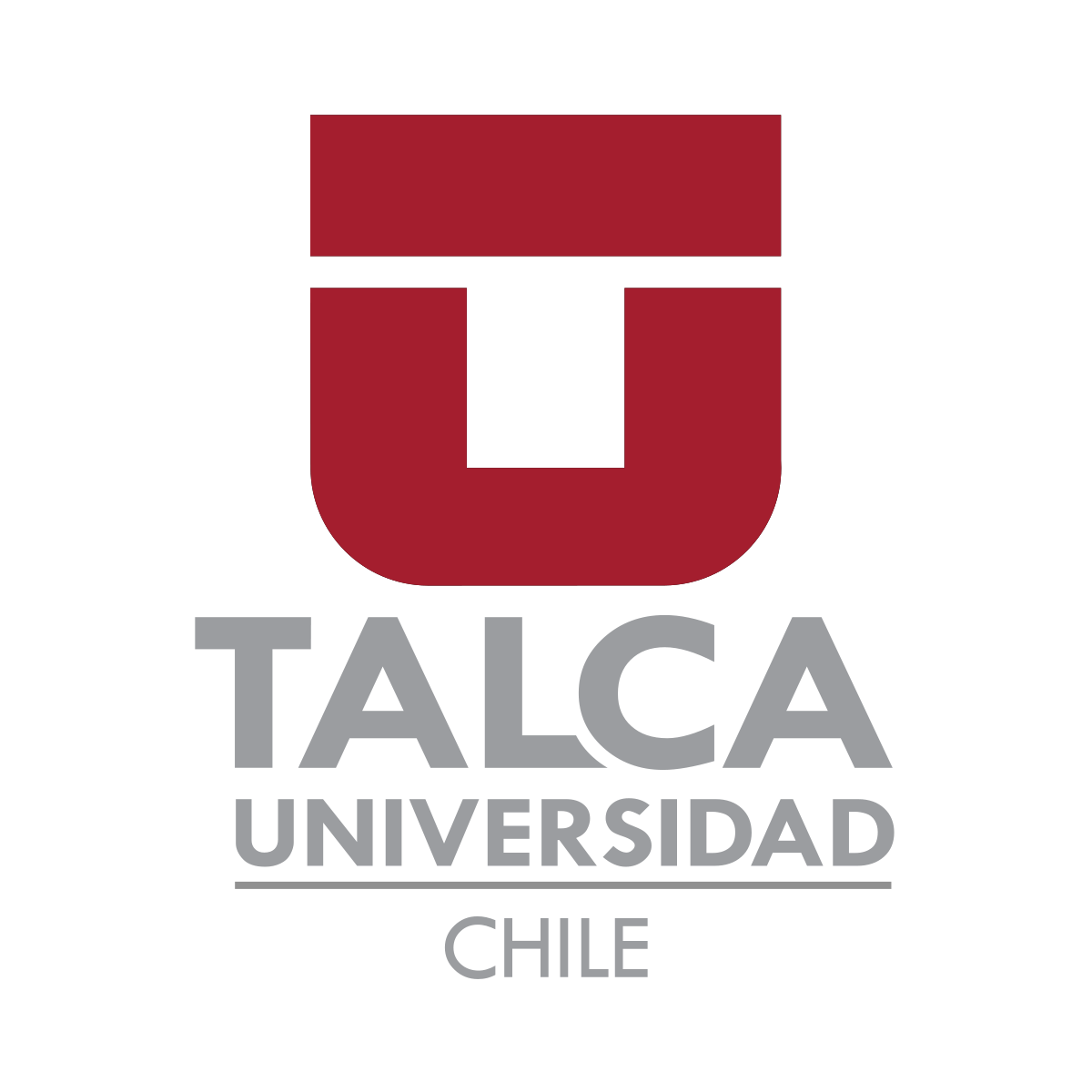
Shaun Tan/UCLA
Photo of a thin film perovskite solar cell produced with a manufacturing process fix developed by UCLA researchers and colleagues
Fix in a manufacturing step of perovskite solar cells paves the way for commercialization of the high-performance, sunlight-to-electricity discovery
Materials scientists at the UCLA Samueli School of Engineering and colleagues from five other universities around the world have discovered the major reason why perovskite solar cells — which show great promise for improved energy-conversion efficiency — degrade in sunlight, causing their performance to suffer over time. The team successfully demonstrated a simple manufacturing adjustment to fix the cause of the degradation, clearing the biggest hurdle toward the widespread adoption of the thin-film solar cell technology.
A research paper detailing the findings was published today in Nature. The research is led by Yang Yang, a UCLA Samueli professor of materials science and engineering and holder of the Carol and Lawrence E. Tannas, Jr., Endowed Chair. The co-first authors are Shaun Tan and Tianyi Huang, both recent UCLA Samueli Ph.D. graduates whom Yang advised.
Perovskites are a group of materials that have the same atomic arrangement or crystal structure as the mineral calcium titanium oxide. A subgroup of perovskites, metal halide perovskites, are of great research interest because of their promising application for energy-efficient, thin-film solar cells.
Perovskite-based solar cells could be manufactured at much lower costs than their silicon-based counterparts, making solar energy technologies more accessible if the commonly known degradation under long exposure to illumination can be properly addressed.
“Perovskite-based solar cells tend to deteriorate in sunlight much faster than their silicon counterparts, so their effectiveness in converting sunlight to electricity drops over the long term,” said Yang, who is also a member of the California NanoSystems Institute at UCLA. “However, our research shows why this happens and provides a simple fix. This represents a major breakthrough in bringing perovskite technology to commercialization and widespread adoption.”
“Our perovskite solar cells are among the most stable in efficiency reported to date,” Tan said.
A common surface treatment used to remove solar cell defects involves depositing a layer of organic ions that makes the surface too negatively charged. The UCLA-led team found that while the treatment is intended to improve energy-conversion efficiency during the fabrication process of perovskite solar cells, it also unintentionally creates a more electron-rich surface — a potential trap for energy-carrying electrons.
This condition destabilizes the orderly arrangement of atoms, and over time, the perovskite solar cells become increasingly less efficient, ultimately making them unattractive for commercialization.
Armed with this new discovery, the researchers found a way to address the cells’ long-term degradation by pairing the positively charged ions with negatively charged ones for surface treatments. The switch enables the surface to be more electron-neutral and stable, while preserving the integrity of the defect-prevention surface treatments.
The team tested the endurance of their solar cells in a lab under accelerated aging conditions and 24/7 illumination designed to mimic sunlight. The cells managed to retain 87% of their original sunlight-to-electricity conversion performance for more than 2,000 hours. For comparison, solar cells manufactured without the fix dropped to 65% of their original performance after testing over the same time and conditions.
“Our perovskite solar cells are among the most stable in efficiency reported to date,” Tan said. “At the same time, we’ve also laid new foundational knowledge, on which the community can further develop and refine our versatile technique to design even more stable perovskite solar cells.”
Original Article: UCLA Materials Scientists Lead Global Team in Finding Solutions to Biggest Hurdle for Solar Cell Technology
More from: UCLA Henry Samueli School of Engineering and Applied Science | University of California Irvine | Sungkyunkwan University | Westlake University | Marmara University | National Yang Ming Chiao Tung University
The Latest Updates from Bing News & Google News
Go deeper with Bing News on:
Perovskite solar cells
- Researchers outline path forward for tandem solar cells
As the old saying goes, two heads are better than one. The same is true when it comes to solar cells working in tandem. Researchers at the U.S. Department of Energy's National Renewable Energy ...
- Ultra-thin, flexible solar cells demonstrate their promise in a commercial quadcopter drone
Whether on Earth or in space, autonomous energy is critical in order to keep power systems running independently for extended periods of time, particularly in remote or unpredictable environments.
- Photovoltaic Research Challenges: Overcoming Hurdles in Solar Technology
Solar photovoltaic (PV) technology has evolved in the past few years, particularly in solar panels and systems. However, researchers and institutions are actively working to overcome limitations to ...
- Perovskite cells power palm-sized drone
Researchers at the Johannes Kepler University in Linz and the Linz Institute for Organic Solar Cells in Austria have developed ultra-lightweight quasi-2D perovskite solar cells with a power output of ...
- Solar Energy News
Apr. 8, 2024 — Researchers have fabricated a new four-terminal organic solar cell with a tandem configuration with a 16.94% power conversion efficiency (PCE). The new device is composed by a ...
Go deeper with Google Headlines on:
Perovskite solar cells
[google_news title=”” keyword=”perovskite solar cells” num_posts=”5″ blurb_length=”0″ show_thumb=”left”]
Go deeper with Bing News on:
Sunlight-to-electricity
- HD Hyundai CEO Chung Ki-sun to co-chair WEF Special Meeting
The HD Hyundai vice chairman is one of 16 co-chairs of the WEF's first Special Meeting to discuss global collaboration in growth and energy.
- How Many Solar Panels Does It Take To Power An RV/Motorhome?
Solar power for RVs is taking off, so if you're looking to add some solar panels to your vehicle, it can take some math to figure out exactly what you need.
- A little sunlight goes a long way for this family support center in Olympia
When the Family Support Center of South Sound opened its Olympia facility in 2023, organizers knew that placing solar panels on its roof would be part of the plan. The panels could cut costs for the ...
- Minnesota sues GoodLeap, Sunlight, Mosaic and Dividend over dealer fees
The Attorney General claims these companies misled consumers about residential solar pricing, concealing inflated fees behind the federal tax credit and long-term contracts with low interest rates.
- 6,000-acre solar energy and storage facility opens near Buckeye
A 6,000-acre solar energy and storage facility is now operational in the far West Valley near Buckeye. Here's what to know.
Go deeper with Google Headlines on:
Sunlight-to-electricity
[google_news title=”” keyword=”sunlight-to-electricity” num_posts=”5″ blurb_length=”0″ show_thumb=”left”]










